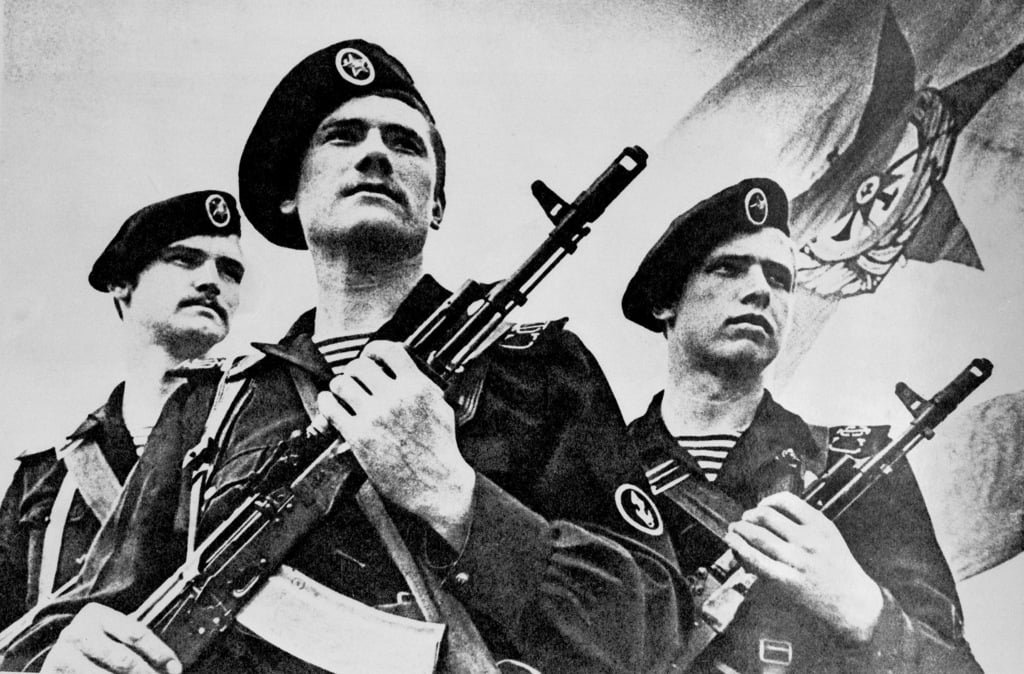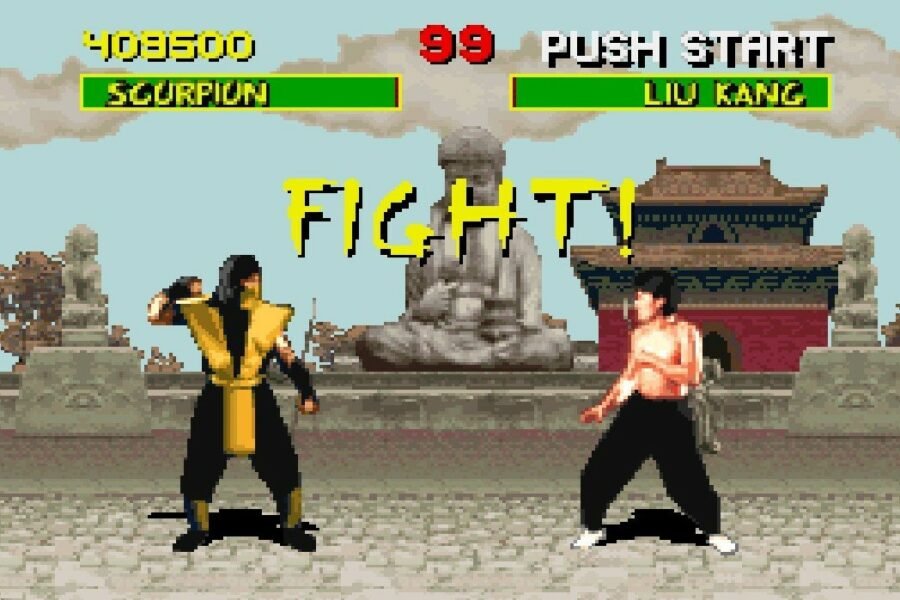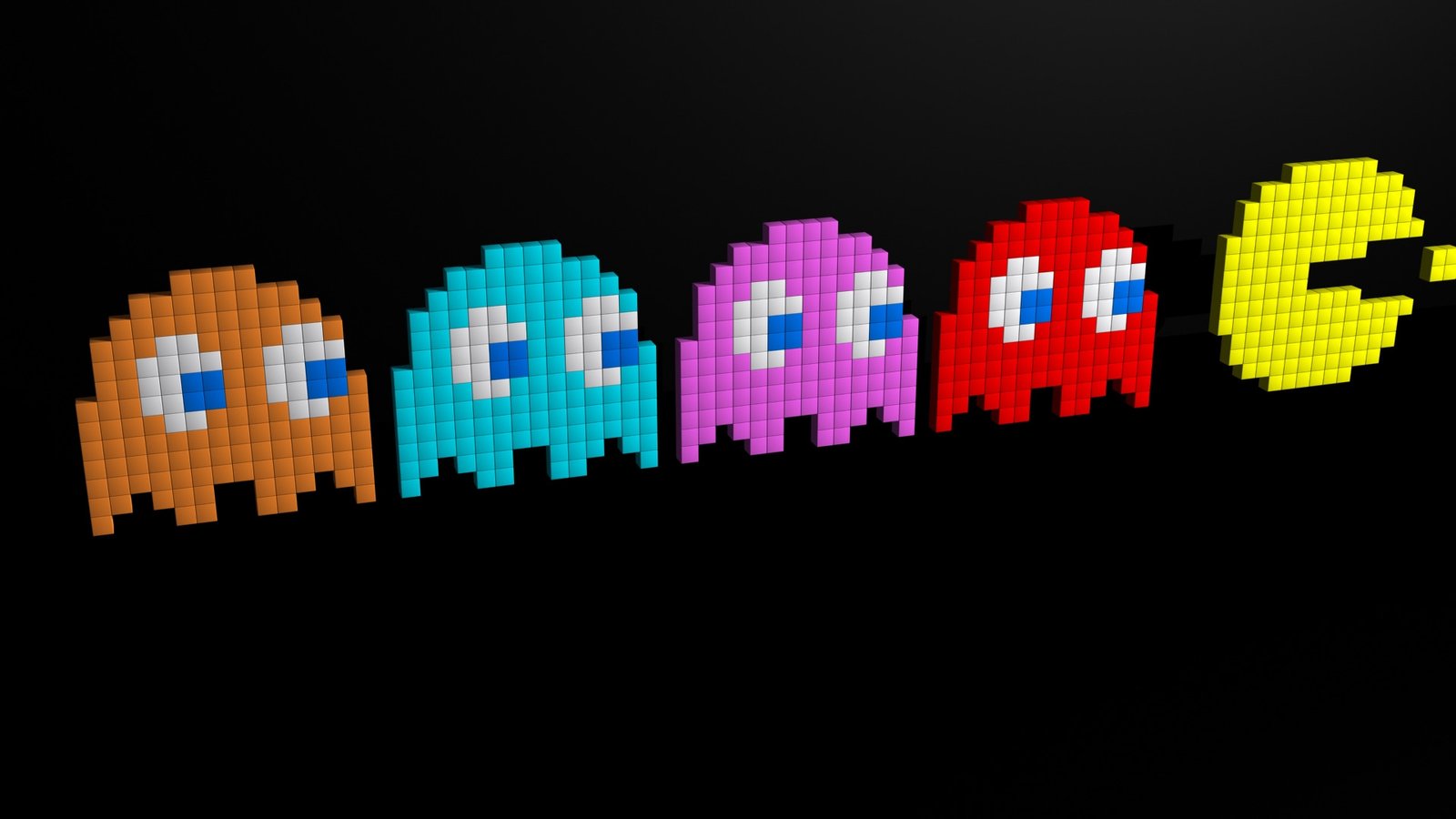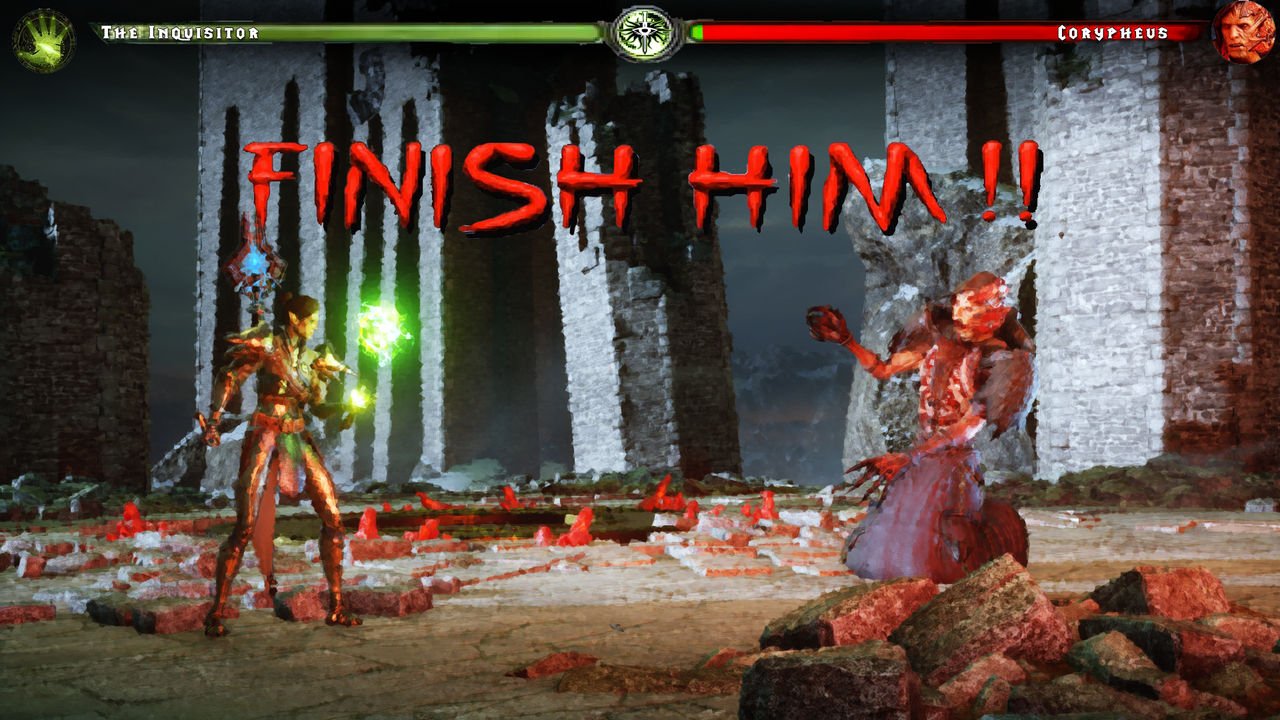In the world of fighting games, Mortal Kombat stands as an indomitable titan, renowned for its intense combat, unique characters, and controversial yet groundbreaking features. Launched in 1992, Mortal Kombat has evolved from a humble arcade game into a global phenomenon, significantly influencing the gaming industry and pop culture. This article delves into the fascinating history of Mortal Kombat, tracing its origins, key milestones, and lasting impact.
Table of Contents
What Is the Story Behind Mortal Kombat?
Mortal Kombat’s story is as intriguing as its gameplay. Created by Ed Boon and John Tobias at Midway Games, the game was developed to stand out in a market dominated by titles like Street Fighter II. Boon and Tobias envisioned a fighting game with a darker, more mature tone, incorporating a rich backstory involving a mystical tournament where Earthrealm’s best fighters compete against outworld villains. The game’s narrative, combined with its distinctive graphics and gameplay, contributed to its initial success and lasting appeal.
Who Was in the Original Mortal Kombat?
The original Mortal Kombat (1992) introduced a diverse and iconic lineup of characters that became the cornerstone of the franchise. Each character had a distinct personality, fighting style, and backstory, adding depth and intrigue to the game’s universe.

Liu Kang
Modeled after Bruce Lee, Liu Kang is a Shaolin monk and martial artist who represents the game’s primary hero. His mission is to protect Earthrealm by defeating the evil forces of Outworld. Known for his powerful bicycle kick and dragon fatality, Liu Kang’s story revolves around his journey to become the champion of Mortal Kombat.
Johnny Cage
A cocky Hollywood action star, Johnny Cage enters the tournament seeking fame and to prove that his martial arts skills are not just for show. His flashy moves, such as the shadow kick and green fireball, reflect his over-the-top personality, making him both a humorous and formidable fighter.
Sonya Blade
The only female character in the original lineup, Sonya Blade, is a determined Special Forces operative on a mission to capture the criminal Kano. Her dedication to justice and her military combat skills, including energy rings and leg grabs, make her a key figure in the fight against the forces threatening Earthrealm.
Raiden
The Thunder God and protector of Earthrealm, Raiden, is a deity with the power to control lightning. He mentors and guides Earthrealm warriors, using his godly powers, such as teleportation and electric shock attacks, to aid them in their battle against the Outworld’s dark forces.
Sub-Zero
A member of the Lin Kuei clan, Sub-Zero wields cartomancy, which gives him the ability to control ice. His rivalry with Scorpion and mysterious, stoic demeanor add layers of intrigue to his character. Sub-Zero’s freezing abilities make him one of the most dangerous and iconic fighters in the series.
Scorpion
A resurrected ninja with a vendetta against Sub-Zero, Scorpion is one of the most recognized characters in the Mortal Kombat universe. His signature moves, including the harpoon spear and teleport punch, along with his fiery “Hellfire” fatality, reflect his burning desire for revenge.
Kano
A ruthless mercenary and member of the Black Dragon clan, Kano is Sonya Blade’s arch-nemesis. His cybernetic eye, which fires a deadly laser, symbolizes his criminal and opportunistic nature. Kano’s underhanded tactics and brutal fighting style make him a notorious villain in the series.
Shang Tsung
The main antagonist of the original game, Shang Tsung, is a powerful sorcerer who can shape-shift into other characters and steal their souls. As the organizer of the Mortal Kombat tournament, his ultimate goal is to help his master, Shao Kahn, conquer Earthrealm. Shang Tsung’s devious nature and mastery of dark magic make him a formidable foe.
These characters, each with their own unique abilities and rich backstories, set the stage for the enduring success of the Mortal Kombat franchise. Their distinctive moves, fatalities, and story arcs have made them icons in the world of fighting games, influencing numerous sequels and adaptations.
What Made Mortal Kombat Famous?
Mortal Kombat gained fame and notoriety due to its groundbreaking innovations, controversial content, and overall impact on the gaming industry.

Digitized Graphics
One of the standout features of Mortal Kombat was its use of digitized graphics. Unlike other fighting games of the time that relied on hand-drawn sprites, Mortal Kombat used real actors to capture their movements, creating characters that looked and moved more realistically. This approach gave the game a distinctive, lifelike appearance, setting it apart from its competitors and drawing players in with its visual appeal.
Fatalities
The introduction of “Fatalities” was a game-changer for Mortal Kombat. These finishing moves allowed players to end a match with brutal, over-the-top executions of their opponents, often involving beheadings, dismemberments, or other gruesome acts. These Fatalities became the game’s most iconic feature, not only shocking players but also adding a layer of excitement and anticipation to each fight. The ability to perform these moves became a mark of skill and added to the game’s replay value.
Controversial Content
Mortal Kombat pushed the boundaries of what was acceptable in video games at the time, featuring graphic violence and mature themes that were uncommon in mainstream games. This led to widespread controversy, with parents, politicians, and media outlets expressing concern over its impact on young players. The outcry was so significant that it led to the creation of the Entertainment Software Rating Board (ESRB), which established a standardized rating system for video games. The controversy, rather than hurting the game, amplified its popularity, making it a cultural phenomenon.
These elements—innovative graphics, unique gameplay mechanics like Fatalities, and the surrounding controversy—combined to make Mortal Kombat one of the most famous and influential video games in history. Its success spawned numerous sequels, a wide array of merchandise, and even adaptations into other media, solidifying its place as a cornerstone of the gaming industry.
The Genesis of Mortal Kombat
The Creative Minds Behind Mortal Kombat
Mortal Kombat was conceived by Ed Boon and John Tobias, two visionary developers working at Midway Games in the early 1990s. At the time, the video game industry was heavily influenced by the success of titles like Street Fighter II, which had set the standard for fighting games. Boon and Tobias aimed to create a fighting game that would break away from the more colorful, cartoonish style of its predecessors, opting instead for a darker and more mature tone.
Their goal was to craft a game that not only featured intense martial arts combat but also offered a compelling storyline and innovative gameplay elements. This vision came to life with the release of Mortal Kombat, a game that would go on to revolutionize the genre and become a cultural phenomenon.
The Unveiling of a New Era
The first Mortal Kombat game debuted in arcades on October 8, 1992, marking the beginning of a new era in video gaming. What immediately set Mortal Kombat apart was its use of digitized graphics. This technique involved capturing real actors performing the game’s moves and then digitizing those performances for use in the game. This approach gave Mortal Kombat a level of realism that was unprecedented at the time, especially when compared to the animated sprites used by other fighting games.
The game’s dark and fantastical setting, combined with its graphic violence and the introduction of “Fatalities”—brutal finishing moves that allowed players to defeat their opponents in a spectacularly gruesome fashion—helped Mortal Kombat carve out a unique niche in the arcade scene. The game’s success not only led to numerous sequels and spin-offs but also established Mortal Kombat as a cornerstone of the fighting game genre, influencing countless other titles in the years that followed.
The Evolution of Mortal Kombat: Releases and Innovations

Mortal Kombat II: Building on Success
After the groundbreaking success of the original Mortal Kombat, the sequel, Mortal Kombat II, was released in 1993, further enhancing the formula that made the first game a hit. Mortal Kombat II expanded the roster of characters, bringing fan favorites like Kitana, Kung Lao, and Baraka into the mix, alongside returning characters such as Scorpion, Sub-Zero, and Liu Kang.
The game introduced new Fatalities, along with other finishing moves like Babalities and Friendships, which added variety and a touch of humor to the series’ signature brutality. The graphics were significantly improved, with more detailed backgrounds and smoother animations, and the gameplay was fine-tuned to offer a more balanced and competitive experience. Mortal Kombat II not only surpassed its predecessor in popularity but also solidified Mortal Kombat as a leading force in the fighting game genre, setting the stage for future installments.
Mortal Kombat III: Expanding the Universe
In 1995, Mortal Kombat III continued to build on the franchise’s momentum with further innovations and enhancements. This installment introduced an even more extensive roster of characters, including new fighters like Stryker, Cyrax, and Kabal, as well as the return of fan favorites. Mortal Kombat III also debuted new gameplay mechanics, such as the “Run” button, which allowed players to close the distance between themselves and their opponents quickly, and the “Combo” system, which enabled more complex and damaging attack sequences.
These additions made the gameplay faster and more aggressive, appealing to both casual players and competitive gamers. The game’s storyline also expanded, delving deeper into the lore of the Mortal Kombat universe, with Earthrealm facing a full-scale invasion by Shao Kahn. Mortal Kombat III marked the beginning of a period of increased popularity for the series, reinforcing its reputation as a groundbreaking and influential fighting game franchise.
The 3D Revolution: Mortal Kombat 4 and Beyond
The release of Mortal Kombat 4 in 1997 marked a significant turning point for the series as it transitioned from 2D to 3D graphics. This shift to 3D brought a new dimension to the gameplay, allowing for more dynamic and fluid combat. Mortal Kombat 4 introduced weapons that players could pick up and use during fights, adding a new strategic layer to the combat. Despite the challenges of adapting to a new graphical style, Mortal Kombat 4 was well-received and demonstrated the series’ ability to innovate and evolve with the times.
The evolution continued with Mortal Kombat: Deadly Alliance (2002) and Mortal Kombat: Deception (2004), which further explored 3D environments and introduced new gameplay mechanics such as multiple fighting styles for each character and interactive arenas with death traps. These games also expanded the series’ story, offering richer narratives and more immersive single-player experiences. The 3D era of Mortal Kombat represented a period of experimentation and growth, helping to maintain the series’ relevance in an increasingly competitive gaming landscape.
Mortal Kombat in the Modern Era

A Return to Roots: Mortal Kombat (2011)
In 2011, the Mortal Kombat series experienced a significant resurgence with the release of Mortal Kombat (2011), often referred to as Mortal Kombat 9. This installment marked a return to the series’ roots, blending the classic 2D fighting style with modern graphics and refined gameplay mechanics. The game served as a reboot of the franchise, retelling the events of the original trilogy while adding new twists to the storyline.
This combination of nostalgia and innovation resonated with both longtime fans and newcomers, earning Mortal Kombat 9 critical acclaim for its smooth combat system, detailed visuals, and rich story mode. The game’s success not only revitalized the franchise but also reaffirmed Mortal Kombat’s place as a leading title in the fighting game genre.
The Launch of Mortal Kombat 11
In 2019, Mortal Kombat 11 was released, pushing the boundaries of what was possible in modern fighting games. The game featured stunningly enhanced graphics that showcased the brutality and intricacies of combat like never before. Mortal Kombat 11 also introduced a deeper and more intricate storyline, continuing the saga of Earthrealm’s defenders while exploring complex themes of time manipulation and multiverse conflicts. The game’s roster was expanded with both new and returning characters, each with customizable abilities and gear, allowing players to tailor their fighters to their play style.
The Cultural Impact of Mortal Kombat
Mortal Kombat has had a profound influence on the fighting game genre and popular culture. Its innovative features and controversial content have not only set new standards for gameplay but also sparked significant debates about video game regulation. The franchise’s lasting impact reflects its role in shaping both the industry and broader cultural conversations.
Influencing the Fighting Game Genre
Pioneering Gameplay Mechanics
Mortal Kombat set new standards in the fighting game genre with its introduction of innovative gameplay mechanics. The concept of Fatalities—brutal finishing moves that players could perform at the end of a match—was groundbreaking. These moves not only added an element of strategy and suspense but also became a signature feature that distinguished Mortal Kombat from other games. Additionally, the use of digitized graphics, which involved capturing real actors’ movements, brought an unprecedented level of realism to the game. This technique gave Mortal Kombat a unique visual style that influenced the aesthetic direction of many future fighting games.
Deep Character Development and Storytelling
Unlike many fighting games of its time, Mortal Kombat placed a strong emphasis on character development and storytelling. Each character had a distinct personality, backstory, and motivation, which contributed to the game’s rich lore. This focus on narrative depth was relatively rare in the fighting game genre, where gameplay often took precedence over the story. By weaving intricate storylines into its gameplay, Mortal Kombat set a new precedent for how fighting games could engage players not just through combat but through compelling characters and plotlines. This approach inspired other developers to create more story-driven experiences within the genre, expanding the possibilities of what fighting games could be.
The Controversy and Its Legacy
Catalyst for Video Game Content Ratings
The intense controversy surrounding Mortal Kombat’s graphic violence and mature themes led to widespread public concern, especially regarding the impact of such content on younger players. This controversy was a significant factor in the establishment of the Entertainment Software Rating Board (ESRB) in 1994, a regulatory body designed to assign age-appropriate ratings to video games. The creation of the ESRB marked a pivotal moment in the gaming industry, as it introduced a standardized system for informing consumers about the content of video games, thereby shaping how games were marketed and sold. The legacy of Mortal Kombat as a catalyst for this change underscores its impact beyond just the gaming world, influencing the broader discourse on media content regulation.
Cultural Icon and Symbol of Creative Freedom
Despite the backlash, Mortal Kombat thrived, turning controversy into a driving force for its success. The game became a cultural icon, representing a bold challenge to societal norms and censorship. Its ability to provoke discussion and push the boundaries of what was acceptable in video games made it a symbol of creative freedom. Mortal Kombat’s controversial content not only drew attention but also attracted a dedicated fanbase that appreciated its unapologetic approach to storytelling and gameplay. This reputation helped Mortal Kombat remain relevant for decades, as it continued to evolve while retaining its core identity as a game unafraid to defy expectations and challenge the status quo.
The Future of Mortal Kombat
Upcoming Releases and Developments
The Mortal Kombat franchise shows no signs of slowing down as it moves forward with new releases and ongoing developments. The series has a history of innovation, continually introducing fresh gameplay mechanics, graphics improvements, and engaging storylines. Upcoming titles are expected to build on this tradition, bringing advanced technology and creative features to the forefront. With a dedicated fanbase and a reputation for pushing boundaries, Mortal Kombat is poised to maintain its influential role in the gaming industry, continuing to captivate both longtime enthusiasts and new players alike.
The Enduring Appeal of Mortal Kombat
Mortal Kombat’s lasting appeal can be attributed to its unique combination of high-octane combat, distinctive characters, and rich narrative. The franchise has successfully merged these elements to create a compelling experience that resonates with players across generations. Its ability to adapt and innovate while staying true to its core identity ensures that Mortal Kombat remains a beloved and influential part of the fighting game genre. As it evolves, the series continues to uphold its legacy as a groundbreaking pioneer, drawing in fans with each new installment and reinforcing its place in gaming history.
The history of Mortal Kombat stands as a remarkable example of creativity and innovation in the video game industry. Since its debut in 1992, the franchise has significantly influenced the fighting game genre with its pioneering features, such as digitized graphics and the infamous Fatalities. Its ability to continually evolve—embracing advancements in technology while retaining its core elements—has cemented its place in gaming history. Beyond gameplay, Mortal Kombat has sparked cultural discussions, particularly regarding video game content and regulation. Its blend of intense combat, memorable characters, and compelling storylines ensures that Mortal Kombat remains a cherished and impactful franchise, poised to captivate and influence future generations of gamers.














